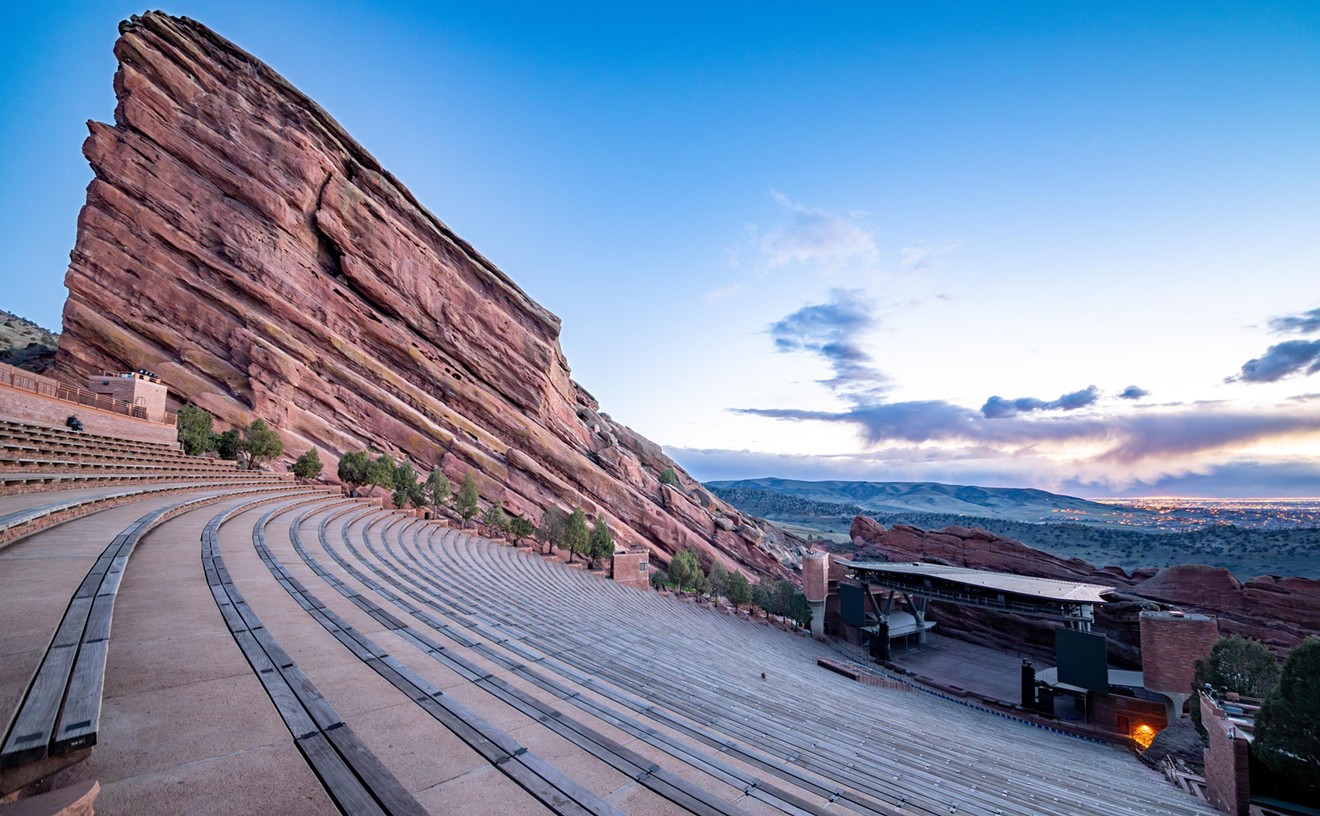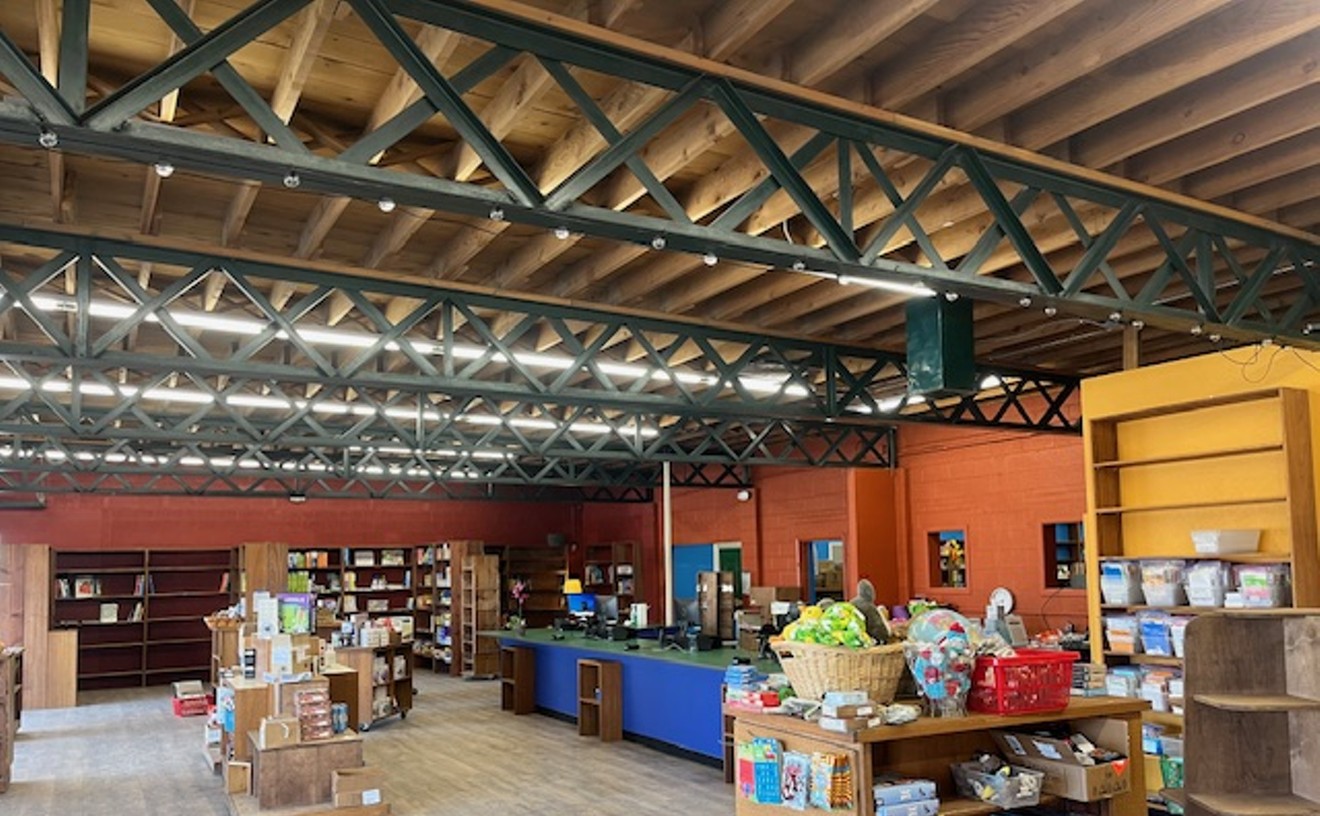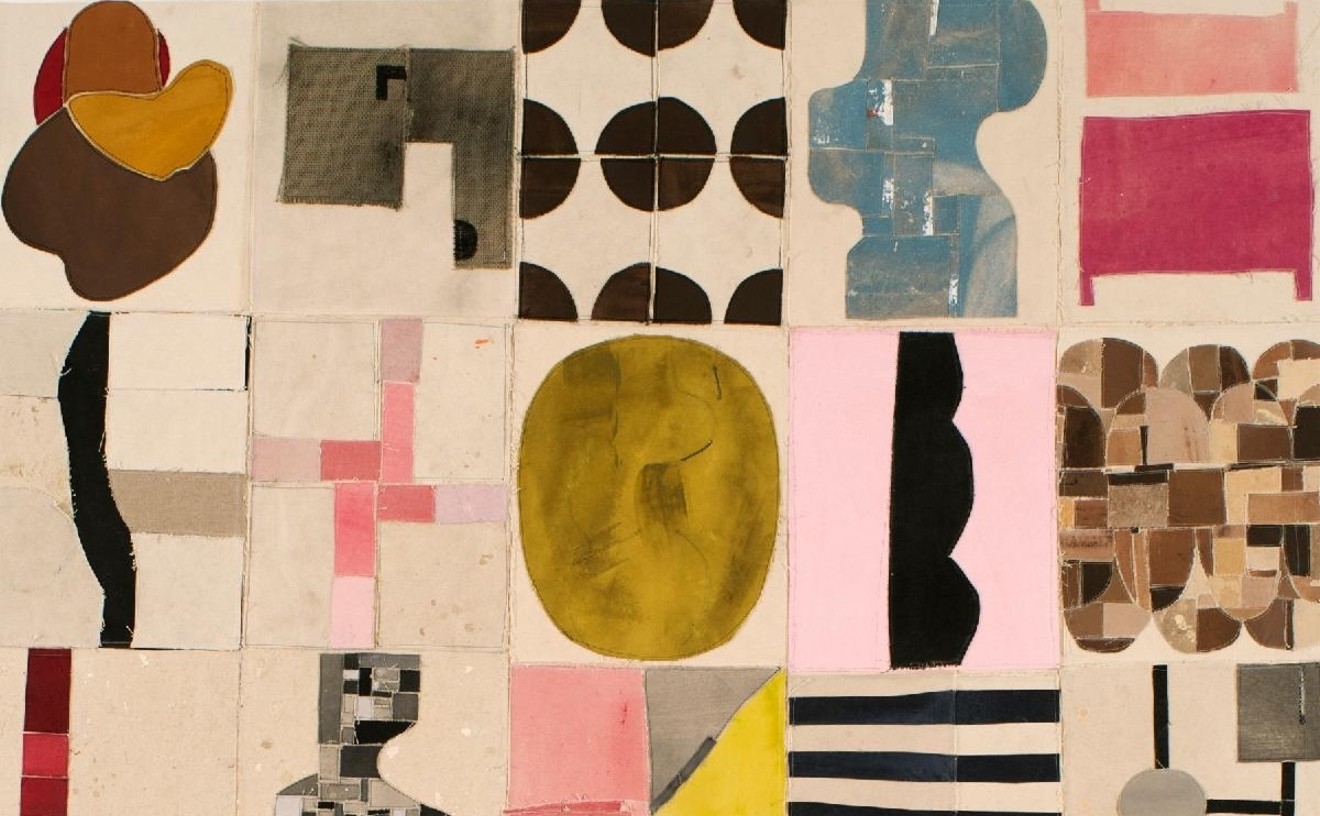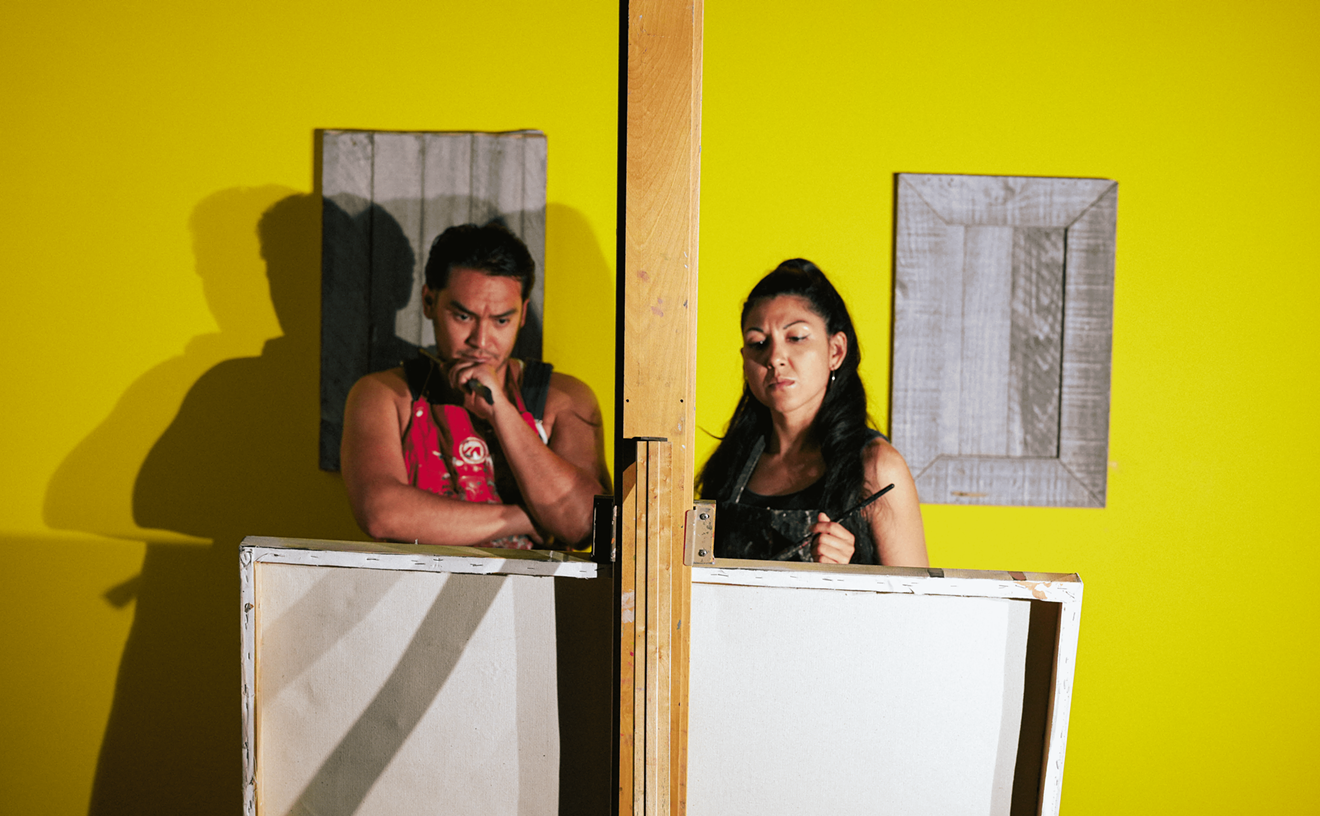The Forney has built up tremendous historic equity with its collection, which deals with the important twentieth-century theme of human conveyance. In addition to trains, it includes horse-drawn carriages, horseless carriages, cars, motorcycles, bicycles and even a few small airplanes. All of these things, some of which are quite large--such as the behemoth of a steam engine called "Big Boy"--are displayed in and around the impressive red-brick building prominently sited near the intersection of Speer Boulevard and Interstate 25.
The museum, which opened in Fort Collins in 1961, was founded by Rachel and J.D. Forney, both of whom are now deceased. After a brief stint in the mid-Sixties on the lower level of Cinderella City mall in Englewood (which is now being demolished), the Forney moved into its current home in 1968. The museum has a broadly based transportation theme, but it originally comprised an automobile collection started by J.D. in the Forties. Even though the trains are larger, the cars are the real treasures of the Forney. Beyond the dirt, the dings, the flat tires and the goofy and distracting display techniques are some truly remarkable machines. The most important car here is surely the incredible 1923 Hispano-Suiza, which sports six wheels on its long, sleek body. Another gem is the black 1937 coffin-nosed Cord, an unbelievably chic monument to streamlining. The 1922 Kissel Gold Bug once owned by air ace Amelia Earhart has both design and historical appeal.
A few months ago, Jack Forney, the museum's president and the son of Rachel and J.D., sold the building to REI, the national chain of sporting-goods stores. REI intends to convert the impressive old structure into one of its so-called superstores, a type of enterprise that combines theme-park diversions such as kayak rides and rock-climbing walls with high-end retail sales of the gear necessary for such pursuits. Early indications are that REI will carry out a sensitive restoration of the historic building, which, frankly, is now in a severely declining condition and has suffered numerous, if minor, insensitive renovations over the years.
The building was constructed in 1901 by the engineering firm of Stearns-Rogers for the Denver Tramway Company--the largest of a number of trolley companies active in the region--to serve as its power plant. At the time, Denver had an extensive trolley system that not only linked the different parts of the city but connected to inter-urban lines that allowed turn-of-the-century Denverites to travel on public transport as far afield as Golden, Boulder and even Estes Park. The site itself is redolent of local history, since it was not far from the Denver spur of the transcontinental railroad line in Cheyenne, Wyoming (first run through the Platte Valley in 1870). So, considering its original intent and location, it's a real shame that the building will no longer serve as a transportation museum.
The architect who designed it is unknown but was most likely a staffer for Stearns-Rogers. It's a noteworthy example of the Romanesque revival style that by the turn of the century had been all the rage in America for twenty years. The form of the building, though at first glance reminiscent of a barn, is apparently based on medieval Italian and French ecclesiastical architecture. The prominent end facade, visible from the Speer Boulevard viaduct (though partly obscured by signage), and the street facade both feature submerged columns and a variety of arched windows that together bring down the scale of the gigantic edifice.
Just inside the entrance to the Forney is a conflagration of desks, chairs, file cabinets, old posters and racks of books and postcards--and that's just the gift shop. Also on display is a drawing of the Forney's new home, a nondescript warehouse on Brighton Boulevard near the Denver Coliseum (after some uncertainty as to whether the new location would work out, plans for the move are apparently back on track). Up a short flight of metal steps is the large room where Batura's paintings are exhibited. In this cavernous but crowded room, it's hard at first to even find Batura's mural-sized pieces. That's because the Forney is a visual riot, with almost every square inch covered with something, including an extensive collection of bad representational paintings, mostly of trains and planes, to which Batura's work begs comparison.
Batura, currently a member of the Pirate co-op, was born in Denver in 1961; he earned a BFA in painting at the University of Colorado in Boulder in 1985. Soon after graduation, he spent a year in Barcelona, Spain, honing his painting skills while earning a living as an English teacher. After a little more than a year abroad, Batura returned to his hometown, where he has made a formidable reputation for himself as an adventurous, unpredictable and influential painter.
Particularly noteworthy was his breakthrough Vitti show at Pirate in 1996, where he displayed paintings of antique gowns, some of them hung upside down. But last year, for his annual Pirate outing, Batura threw the art world a curve with Well, a show crammed with his haphazardly installed life's work. At the time, Well seemed like an act of surrender--the title was evocative, but it was unclear whether Batura was referring to a well of creativity or a well of despair. Looking back, Batura says, "I realize now that what I was doing in that show, unconsciously, was creating the Forney Museum at Pirate."
The paintings at the Forney mark a major shift for Batura in terms of subject matter. He has long worked within the still-life tradition, in which objects are depicted intimately and in close-up detail. These new pieces, on the other hand, are landscapes. And unlike the Vitti gown paintings, which featured what Batura calls "empty zones," the recent work is "complicated."
The inspiration for this series of train-wreck paintings was an archive of photographs taken by Otto Perry, a local train enthusiast who bequeathed them to the Western History Collection of the Denver Public Library, where Batura carries on his day job. Batura used illustrations from old books for the images in the Vitti series, so it's not surprising to find him using archival material as a source in these new paintings. In the Perry archive, Batura says, "there are sixty or seventy photographs of train wrecks, all of them regional scenes, but with little information of where or when"--which was fine by him. "I wasn't interested in the locale or why it happened. Those things weren't important to me. I'm not into tragedy or sadness," he says. Rather, he distances himself from the reality of the scene and uses it not to tell the story of a train wreck, but as a compositional device. As he points out, "The crash gives the landscape scene an abstract quality."
This attribute is obvious in all five of the Batura paintings on display at the Forney (several other small paintings, shown at the opening reception, have since been removed). The first painting, hung high on the wall to the right of the entrance (and apart from the others), is an eight-foot square panel titled "June 26th 1926." Beneath a rose-colored tint, the listing passenger cars create an array of diagonal lines that guide the viewer's sight from the foreground of the picture all the way to the gold stand of trees in the background. Across the bottom is the crash debris; while the crushed metal takes on the character of an abstract-expressionist field, in the context of the rest of the painting, it's wholly representational.
Like the others, this painting has been carried out with casein, a rarely used and all but archaic milk-based pigment, applied to a birch board. It's the casein, according to Batura, that creates the gorgeous flat sheen in these paintings. His use of casein and wood is just the latest example of Batura's interest in off-beat, little-used materials and methods.
Hung even higher and to the left is "November of 1935," one of three paintings displayed on the west wall. In the piece, which measures six by twelve feet, Batura has painted a stack of box cars that have tumbled down a ravine. Once again, the diagonal lines of the wrecked train make for a lively composition with a convincing illusion of depth. But in this painting, the diagonals do not lead the viewer's eye to the back of the picture, as in "June 26th 1926"; instead, they provide a visual ladder to the top.
"Midwinter 1903" is the most conventional painting of the series; at first glance it reads like a traditional landscape. Batura skillfully creates the atmosphere of the frigid scene, with falling snow partly obscuring the forest background. Painted on a six-by-twelve-foot horizontal panel, the wrecked train runs level across the middle, exaggerating the piece's elongated shape.
Another painting that's also pretty much an old-fashioned landscape save for the inclusion of the wreck itself is "Forty-One," which, unlike the others, is hung at eye level. In this piece, Batura captures a claustrophobic--and acrophobic--view of a train that has fallen down the steep walls of a canyon.
Interestingly, with paintings like "Midwinter 1903" and "Forty-One," Batura links his work to that of other regional artists such as Chuck Forsman and Don Stinson, who put a contemporary spin on the Western landscape. This is a new connection for his work.
Batura's show runs for only one more week. It's set to close on October 1, which is also the day the Forney closes its doors in preparation for its move across town. By coinciding his show with this momentous event, Batura has done the art world a service by exposing hundreds of its denizens to the marvelous lost-in-the-past atmosphere of the Forney's current home--a quality that will most assuredly be a casualty of the move.
New paintings by Stephen Batura, through October 1 at the Forney Transportation Museum, 1416 Platte Street, 303-433-3643.










